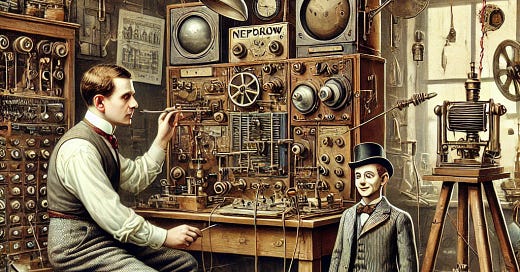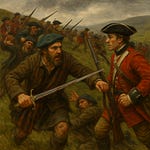Today, we're delving into the life of one of Scotland's most visionary inventors, John Logie Baird, born on August 13, 1888, in Helensburgh, Dunbartonshire. Baird's groundbreaking work in television technology earned him a lasting place in history, and his innovations have shaped the way we experience media today.
John Logie Baird's early years were marked by a curiosity and inventiveness that hinted at his future contributions to technology. He was the youngest of four children in a family led by his father, Reverend John Baird, the local Church of Scotland minister, and his mother, Jessie Morrison Inglis. Baird's education took him from Larchfield Academy in Helensburgh to the Glasgow and West of Scotland Technical College and the University of Glasgow. Although his studies were interrupted by World War I, Baird's early exposure to engineering laid the foundation for his later achievements.
After the war, Baird faced health challenges that led him to the south coast of England, where he began experimenting with television technology. His early attempts were rudimentary but determined; he used everyday objects like an old hatbox and bicycle light lenses to build the world's first working television set. In 1924, Baird demonstrated the possibility of transmitting moving silhouette images, a precursor to his more sophisticated work. His breakthrough came on October 2, 1925, when he successfully transmitted the first television picture, a 32-line image of a ventriloquist's dummy named "Stooky Bill." This achievement marked the beginning of Baird's journey to develop a fully functional television system.
The culmination of Baird's work came on January 26, 1926, when he gave the world's first public demonstration of true television images. Held at his laboratory in Frith Street, London, this event was a watershed moment in the history of television. Baird's system could scan and display live moving images with tonal graduation, a feat that had never been achieved before. This demonstration paved the way for the future of television broadcasting.
Baird continued to innovate in the field, and in 1927, he achieved another milestone by transmitting a long-distance television signal from London to Glasgow. This was followed in 1928 by the first transatlantic television transmission from London to New York, cementing Baird's place as a pioneer of global television.
But Baird didn't stop there. He was also a pioneer in colour television technology. On July 3, 1928, he demonstrated the world's first colour television transmission. This system used scanning discs with different colour filters, laying the groundwork for the development of modern colour television. Baird's work in this area was so advanced that by 1944, he was able to demonstrate a fully electronic colour television system that used a 600-line resolution, a precursor to today's high-definition television.
Despite his many successes, Baird faced challenges as well. His mechanical television system, while groundbreaking, was eventually surpassed by fully electronic systems developed by competitors like EMI-Marconi. However, Baird's contributions to the field remained significant. He was the first to demonstrate stereoscopic (3D) television, fibre-optics, and even radar-like systems.
Baird's legacy extends beyond his technical achievements. In recognition of his contributions, he was named one of the ten greatest Scottish scientists in history by the National Library of Scotland and was inducted into the Scottish Engineering Hall of Fame in 2015. In 2021, the Royal Mint honoured Baird with a 50p coin commemorating the 75th anniversary of his death, a testament to his enduring impact on the world of technology.
John Logie Baird passed away on June 14, 1946, in Bexhill-on-Sea, East Sussex, but his influence on modern media is still felt today. His work laid the foundation for the television systems we now take for granted, and his visionary approach to technology continues to inspire.
As we celebrate the birth of John Logie Baird on this day in 1888, we honour a man whose inventions changed the way we see the world. From the first flickering images on a screen to the vibrant displays in our homes today, Baird's legacy lives on in every television set around the globe.













Share this post